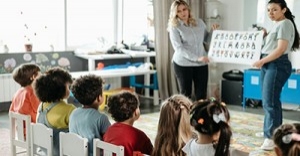Ensuring families feel informed and engaged is more than a compliance checkbox—it’s the foundation of true collaboration that supports each child’s learning journey. National Quality Standard (NQS) Element 1.3.3 requires services to keep families up-to-date about the educational program and their child’s progress. Simply saying “they had a great day” plus an end-of-year report falls short of this intent. Here’s how to enrich daily communication, meet compliance expectations, and foster home-to-service learning continuity.
Understanding NQS Element 1.3.3
Element 1.3.3 states:
Information for families: Families are informed about the program and their child’s progress.
Key expectations include:
- Regular insights into how the program unfolds and how each child engages with learning experiences.
- Two-way dialogue that invites family input, questions, and suggestions.
- Documentation of individual learning milestones, not simply group or surface-level updates.
Why “Great Day” Isn’t Enough
| Requirement | “They had a great day” only | Improved Practice |
|---|---|---|
| Inform families about daily learning | No detail on learning | Share specific observations, photos, or anecdotes |
| Reflect individual progress | No individual evidence | Publish learning stories tied to outcomes |
| Enable two-way dialogue | One-way, superficial | Invite family questions and home extension ideas |
| Connect program content to home learning | No suggestions | Provide practical play or discussion prompts |
Daily Communication Strategies
-
Learning Stories & Observations
- Post brief narratives or digital snapshots highlighting a child’s play, problem-solving, or social interactions.
- Link each story to EYLF outcomes or learning intentions.
-
Program Overviews
- Display the weekly or daily program in your foyer or online portal.
- Note which activities your child accessed, with running commentary on emerging interests.
-
Two-Way Portals
- Use apps or journals where families can comment, ask questions, and share home experiences.
- Respond within 24 hours to model genuine collaboration.
-
Photo & Portfolio Updates
- Curate mini-portfolios that include photos, work samples, and checklists of skill development.
- Rotate featured children weekly so every family gains a window into classroom life.
Summative Assessments: Complement, Don’t Replace
End-of-year or termly reports have value—they consolidate progress against developmental milestones. But they should:
- Draw on accumulated daily evidence (observations, photos, conversations).
- Reference earlier snapshots so families see growth over time.
- Include specific next steps and home-based extension ideas.
Fostering Home-Service Learning Continuity
-
Extend the Play
Suggest one activity per week that mirrors in-service experiences (e.g., “Try this sink-float experiment in the kitchen sink and tell us what happens!”). -
Family Workshops
Host short, one-hour sessions where families co-create or trial classroom experiences at home. -
Reflection Prompts
Send a monthly question to families: “What surprised you about your child’s curiosity this month?” Use responses to inform programming.
Quick Compliance Checklist
| Action | Frequency | Outcome |
|---|---|---|
| Share a learning story per child | Weekly | Families see individual progress and ask targeted questions |
| Display/update program overview | Daily/Weekly | Transparency into curriculum and child engagement |
| Digital/photo portfolio update | Bi-monthly | Visual record of skills, work samples, and social milestones |
| Family feedback invitations | Ongoing | Strengthened two-way partnership and responsive programming |
| Provide home-extension suggestions | Weekly | Reinforces learning and values the home environment as co-educator |
Elevating family communication isn’t just about ticking boxes—it’s about forging partnerships that empower children both at the service and at home. By embedding specific, regular, and two-way updates into your practice, you’ll not only comply with NQS 1.3.3 but also weave families into every child’s learning story.
Further Reading
Practical Examples Of NQS Quality Area 1
The National Quality Standard and Elements
The Planning Cycle To Document Children's Learning







 As an Educator in Australia, your pay rate falls under the Children’s Services Award 2010. This award states the minimum amount that an employer can
As an Educator in Australia, your pay rate falls under the Children’s Services Award 2010. This award states the minimum amount that an employer can When working as a qualified Early Childhood Teacher (with a university degree) within a service, your rate of pay will come from the Educational Services
When working as a qualified Early Childhood Teacher (with a university degree) within a service, your rate of pay will come from the Educational Services When working as a Diploma Qualified Educator your pay rate is from the Children's Services Award 2010. This Award states your minimum rate of pay
When working as a Diploma Qualified Educator your pay rate is from the Children's Services Award 2010. This Award states your minimum rate of pay When working as a Cert 3 Qualified Educator, your pay rate is from the Children's Services Award 2010. This Award states your minimum rate of
When working as a Cert 3 Qualified Educator, your pay rate is from the Children's Services Award 2010. This Award states your minimum rate of Educational Leaders play a crucial role in their early childhood service by ensuring that the educational program aligns with best practices and supports the holistic
Educational Leaders play a crucial role in their early childhood service by ensuring that the educational program aligns with best practices and supports the holistic In early childhood education and care, ratios are more than a technicality—they are a frontline safeguard. Every child deserves responsive supervision, emotional connection, and developmental
In early childhood education and care, ratios are more than a technicality—they are a frontline safeguard. Every child deserves responsive supervision, emotional connection, and developmental With the new national child safety reforms kicking in on 1 September 2025, early childhood services like yours have a real opportunity to lead the
With the new national child safety reforms kicking in on 1 September 2025, early childhood services like yours have a real opportunity to lead the Here’s a comprehensive Mobile Phone and Smart Watch Policy tailored for early childhood education and care (ECEC) services in Australia, aligned with the latest 2025
Here’s a comprehensive Mobile Phone and Smart Watch Policy tailored for early childhood education and care (ECEC) services in Australia, aligned with the latest 2025 The Sea of Fish Challenge is a national initiative that invites children, educators, families, and communities to create and display fish artworks as a symbol
The Sea of Fish Challenge is a national initiative that invites children, educators, families, and communities to create and display fish artworks as a symbol Across the early childhood education and care sector, educators are sounding the alarm: current staffing ratios are insufficient to deliver safe, meaningful, and developmentally appropriate
Across the early childhood education and care sector, educators are sounding the alarm: current staffing ratios are insufficient to deliver safe, meaningful, and developmentally appropriate


